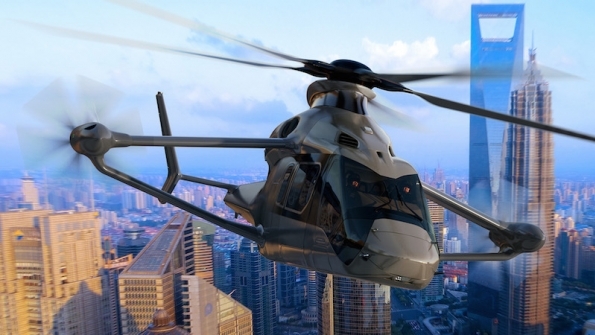
The new Rotorcraft Airbus Racer from CleanSky 2 initiative is a great example of how far we’ve come but did you know that the concept of vertical flight has been around for centuries? In fact, it was first recorded in China, 400 B.C based merely on a children’s toy made from bamboo. This has certainly led to bigger and better things.
What is the CleanSky 2 Initiative? In a nutshell, it’s the largest European research program aimed at the development of innovative, cutting edge technologies to reduce environmental impact from aviation.
Brief History of the “Chopper”
The first full large-scale production helicopter was the Sikorsky R-4 in 1944 but there were many other attempts. Some standout concepts were developed as early as 1887 by Gustave Trouvé who built and flew a tethered electric helicopter. Others included the Autogyro in 1933, Focke-Wulf Fw 61 in 1936 and the Bell Model 30 in 1941.
According to historic records, a toy developed by Alphonse Pénaud was given to the Wright brothers by their father in 1870 which inspired them to pursue their dream of flying. Interesting to think what would have happened had they not received the toy?
In recent years, more attention has been given to commercial airliners, fighter jets and aerospace innovations that some may have forgotten about the helicopter. They are sometimes seen as too slow in comparison to their fixed wing counterparts but this is all changing.
More about the Airbus Racer Specifications
Normal helicopters have two rotor blades; retreating and advancing blades. The main rotor blades generate lift and tail rotor provides thrust. The tail rotor is required to counteract torque from the main rotors but at a certain airspeed, the backward moving blade no longer generates additional lift so the helicopter reaches maximum speed. The Airbus Racer on the other hand is different.
Instead of relying on the main rotor blades for lift and a tail rotor for thrust, the Airbus Racer is equipped with two forward facing propellers. These propellers now fulfil the role of the tail rotor along with many other benefits. The wing design structure was developed through collaboration between GE Aviation and the University of Nottingham’s Institute for Advanced Manufacturing and plays a major part. This craft is designed to achieve optimum balance between speed, cost-efficiency, range and mission performance.
Here are some specifications:
- Cruise speed: +-400 km/h
- Range: Double that of current helicopter models
- Cost: 25% less
- Fuel-efficiency: Will use 15% less fuel at 334 km/h (207 mph)
The weight was removed from the main rotor which, overall, shows an increase in maneuverability, hovering, climbing and descending vertically. The Airbus Racer is also smoother, more comfortable and much quieter as a result.
Future Applications
The innovative design and technology in the Airbus Racer make this craft an ideal option for a variety of applications. Some of the more popular sectors would be medical emergency response, law enforcement and long distance transport.
Medical teams will be able to respond to emergencies faster, use less fuel and give patients a more comfortable ride. Not to mention more stability for the medics on-board performing life-saving procedures.
Another sector that will greatly benefit from this is offshore oil, gas and wind platforms. Natural resources are scarcer and offshore winds are stronger so they are located further away. With the Airbus Racer’s advancements in fuel efficiency, speed and longer range, transporting of staff, supplies or maintenance flights will be much easier, safer and more economical.
The Airbus Racer may not be the first to use tiltrotor technology as it has been done before with the likes of AgustaWestland Project Zero and the Bell-Boeing V-22. I doubt they share the same overall benefits so take nothing away from the innovation, creativity and forward thinking of all the parties involved. Technology is improving at an astonishing rate and we are fortunate to witness some of the advancements every day.
Click here to read more from the Paris Airshow Airbus reveal.
PRV Engineering always strives to deliver a complete, customized service. We are a one-stop shop offering all engineering and manufacturing services under one roof. Some of industries we work with include Aerospace and Defense , Automotive, Rail, Construction, among others. Please get in touch if you need help with your project or would like more information.
This site uses Akismet to reduce spam. Learn how your comment data is processed.


 Mail:
Mail: 




Leave a Comments